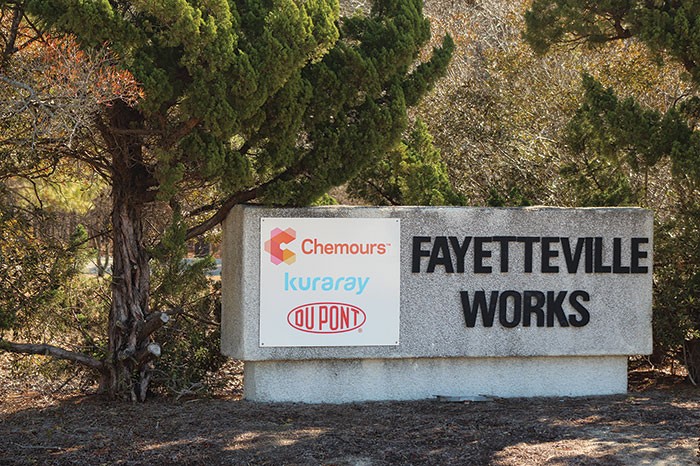Advertisement
Grab your lab coat. Let's get started
Welcome!
Welcome!
Create an account below to get 6 C&EN articles per month, receive newsletters and more - all free.
It seems this is your first time logging in online. Please enter the following information to continue.
As an ACS member you automatically get access to this site. All we need is few more details to create your reading experience.
Not you? Sign in with a different account.
Not you? Sign in with a different account.
ERROR 1
ERROR 1
ERROR 2
ERROR 2
ERROR 2
ERROR 2
ERROR 2
Password and Confirm password must match.
If you have an ACS member number, please enter it here so we can link this account to your membership. (optional)
ERROR 2
ACS values your privacy. By submitting your information, you are gaining access to C&EN and subscribing to our weekly newsletter. We use the information you provide to make your reading experience better, and we will never sell your data to third party members.
Pollution
North Carolina cracks down on Chemours’s fluoroether air pollution
State’s move threatens continued operation of plant
by Cheryl Hogue
April 9, 2018

Update
North Carolina regulators have asked a state court to order Chemours to stop releasing fluorethers into the environment. Read more here.
To protect drinking water, North Carolina officials are taking a step that could shut down Chemours’s fluoroether and fluoropolymer manufacturing plant outside Fayetteville.
The state formally warned Chemours on April 6 that in 60 days, it will prohibit the plant from emitting to the atmosphere hexafluoropropylene oxide dimer acid (HFPO-DA) and two related fluoroethers that hydrolyze into HFPO-DA. One of those chemicals is GenX, a surfactant used as a polymerization aid to manufacture fluoropolymers. Fluoropolymers are used as membranes in fuel cells and to produce chlorine and sodium hydroxide.

The North Carolina Department of Environmental Quality (DEQ) says it will modify the company’s air pollution permit to bar emission of the fluoroethers unless Chemours demonstrates that its emissions do not end up tainting groundwater with HFPO-DA. Toxicity of this and other fluoroethers are unclear, but some studies suggest they could be hazardous to human health.
“The incessant fouling of the state’s natural resources by Chemours cannot be sustained under law,” DEQ Director Michael A. Abraczinskas says in the warning letter to the company.
Earlier this year, North Carolina regulators directed the company to curb air releases of the fluoroethers while investigations continued. Now, state regulators say they’ve confirmed a causal link between the fluoroether emissions from the plant and HFPO-DA pollution in groundwater up to 11 km from the plant in the reverse direction of groundwater flow.
Prohibiting the emissions could force Chemours to stop production of fluoroethers at the facility unless it is able to capture or otherwise control their release into the air.
The company did not respond to C&EN’s request for comment.
Meanwhile, DEQ says the air releases of HFPO-DA and related compounds are greater than Chemours previously reported. Based on measurements taken in January by a Chemours-paid contractor, the agency calculates that the plant could release more than 1,225 kg of GenX-related fluoroethers into the air each year. That’s more than 3.7 times the yearly emissions of these substances that Chemours reported to the state in October, the agency says.
HFPO-DA and other fluoroethers contaminate the Cape Fear River—which runs past the plant and supplies downstream drinking water utilities—as well as the river’s sediments.
Chemours began capturing its wastewater for disposal last year. In November, the state revoked the facility’s wastewater discharge permit for its fluorochemicals production area.





Join the conversation
Contact the reporter
Submit a Letter to the Editor for publication
Engage with us on Twitter